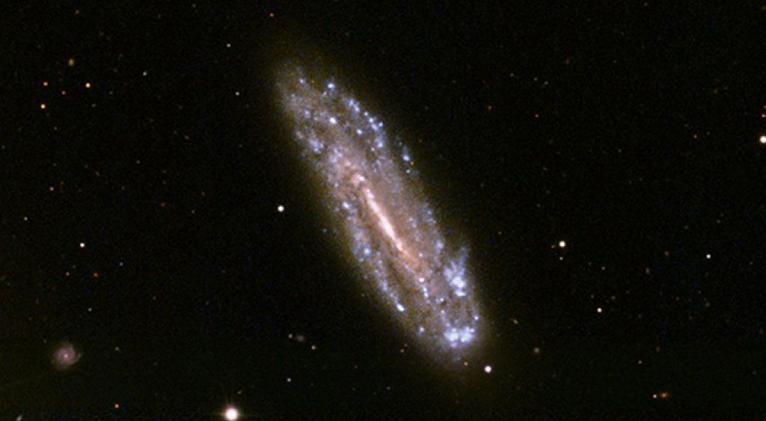No black holes? Scientist claims mathematical proof
especiales

Professor Laura Mersini-Houghton from the University of North Carolina at Chapel Hill maintains she managed to merge two seemingly contradicting theories, Einstein's theory of gravity and a fundamental law of quantum theory.
While Einstein's theory predicts the formation of black holes, the quantum theory law says that no information from the universe can ever disappear, in an attempt to resolve the so-called ‘information law paradox.’
Until now modern science generally believed that a black hole forms from a massive star that collapses under its own gravity into a single spot in space the astronomers call a singularity, surrounded by the event horizon that neither light nor energy could escape from. Three decades ago renowned physicist Stephen Hawking proposed that black holes could emit radiation. Hawking’s hypothesis, made in 1974, was based on quantum mechanics.
Mersini-Houghton agrees with Hawking on the radiation being given off by a collapsed star for a certain period of time, yet she also insists that by emitting radiation the star also loses too much of its mass right to the point when formation of a singularity – and a black hole – is impossible.
The academic suggests that the dying stars do not fall inward, but “probably blow up.”
“Physicists have been trying to merge these two theories — Einstein's theory of gravity and quantum mechanics — for decades, but this scenario brings these two theories together, into harmony,” Mersini-Houghton said in the statement. “And that's a big deal.”
According to the university, professor’s findings will make scientists “reimagine the fabric of space-time” and “rethink the origins of the universe.”
“I'm still not over the shock,” said Mersini-Houghton, a professor in UNC’s College of Arts and Sciences. “We've been studying this problem for a more than 50 years and this solution gives us a lot to think about.”
Mersini-Houghton’s conclusions have already been severely criticized by William Unruh, a theoretical physicist from the University of British Columbia.
“The [paper] is nonsense,” Unruh said in an email to IFL Science media outlet.
“Attempts like this to show that black holes never form have a very long history, and this is only the latest. They all misunderstand Hawking radiation, and assume that matter behaves in ways that are completely implausible,” he claimed.
Quite to the contrary of Mersini-Houghton calculations, Unruh maintains that black holes do not emit enough Hawking radiation to lose mass to avoid formation of a black hole.
“It would take 10^53 (1 followed by 53 zeros) times the age of the universe to evaporate,” Unruh explained, adding that it is a common mistake for those who do not understand Hawking’s radiation theory in full, that the “outgoing energy back closer and closer to the horizon of the black hole, where its energy density gets larger and larger,” he said.
“Unfortunately, explicit calculations of the energy density near the horizon show it is really, really small instead of being large. Those calculations were already done in the 1970s. To call a bad speculation ‘has been proven mathematically’ is, shall we say, an overstatement,” Unruh concluded.













Add new comment